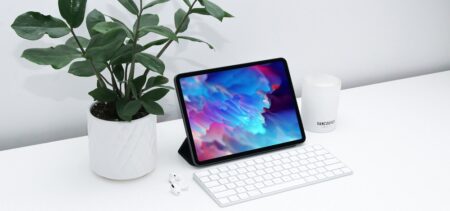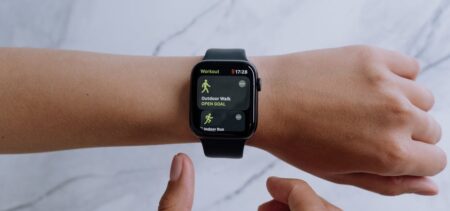You may be wondering what is the link between video calling and VR – and we’ll get there in a moment. Currently there is a lot of talk about the future of Virtual Reality (VR) and its preconized pivotal role in social media and/or the business environment.
So far so good, but the tech predictions for 2016 favored Augmented Reality (AR) coming first in this tech race, since VR is still in the making and it needs to be pushed rather strongly for the public to feel comfortable with it.
Sure, for some it may be a small step – gamers seem to have always been more connected to the virtual world than to the physical reality around them; enterprise employees from various locations have accommodated with daily video calls, video conferences and remote collaboration. On the other hand, have they really?
One of the reasons VR easily brings to mind video calling is that common moment in both these technologies’ past when people would dream of having the possibility to connect via such advanced means. Their translation into hardware gear and their adoption for private or professional purposes is however different from that dreamy glimpse of the future located in the not-so-far-away past.
The defense mechanism that makes people fear video calling
As this source puts it, people do not love video calls. It is not as shocking as it might seem for those who never thought this through before. Just take a moment and consider how much time do you spend daily making video calls? Are they mandatory, or are they by choice?
In an office environment one may easily notice how, even when the software and hardware offer the opportunity for video calls, people rarely take it unless it is customary or imposed. Otherwise, they usually engage in audio conversations, supplemented by text messages.
The real barrier is psychological, although faulty technical elements are not a motivational factor either. Having an exclusively audio call offers a more impersonal connection, therefore less emotional exposure. People need to be able to choose what they give away about themselves and what they keep private – from a tired look to a sad state of mind, while continuing to fulfill their daily tasks. When engaging in video-calls, keeping some things to yourself is more difficult and the constant pressure of providing an overall “in-shape” presence might just be more than some can take. It may also be unnecessary since having a more relaxed or a low-energy moment does not contradict the idea of performing the official or job-related attributes.
Video calling is formal, as much as we would like to believe otherwise. A Business Insider article mentions the things considered unacceptable during a video-call. Among them are dressing unprofessionally, touching your face, making weird noises or staying in bed. All these details are adjusted by reflex when the conversation is face-to-face, but the (psychologically) weird mix of phone (or device) calling with video images scrambles up our natural instincts and we have to train out brain into new acceptable habits.
People are and will remain judgmental. However artsy and relaxed a working environment would be, your professional conversation partner could still judge on the back of his or her mind the fact that your posture or expression translate into carelessness or disrespect.
Digital progress brings wave after wave of disruption in the universe of social habits, making the border between what is acceptable and what is frowned upon an ever-shifting one. Even so, new habits form and regroup following the shapes of older habits. Have you noticed how social media tends to establish its own rules? The time of reading a message, the lag between reading and replying, the adding or not adding a person we know or the response we show for events, photos, invitations – they all have now their own significance, accepted not by individual persons but by entire groups. Of course, interpretations are “locked” via online articles that summarize all these practices, but nevertheless they emerge out of spontaneous interactions, before turning into soft rules.
As in real life, we all need our protective mechanisms from all the official array of should and should nots. That is why especially the person that is not in an authority position always perceives an audio call as safer. Not necessarily because there is something to hide, but because it is psychologically less pressurizing, and the focus can go to the core of the matter instead of distributing towards all the social details of a full audio and video interaction.
*It is only logical to assume the same would fit a full-on VR social interaction.
The constant push for video calling
The tech giants have taken the dreams we have mentioned above and turned them into commercial technology. Whether they don’t bother with psychological studies, or they are aware of the way the human psyche is wired but they believe it is always room for change, pushing video calling is an ongoing race between the application providers.
Skype recently launched a 25-person group video calling available for both Android and iOS. Here’s a way of virtually recreating a 25-people company meeting in the digital environment. Alternatively, you may reconnect with 25 friends at once, or have an extended family reunion video call.
The plethora of available applications that offer video calling comprises free apps that allow just about anybody to engage in video calls. Facebook Messenger, Viber, Google Hangouts, Tango, Imo, and WeChat are just some of the options when it comes to making video calls.
The reports also tell a different story on how people take on the vide0-calling features: Facebook declared that the user of Messenger made over 1 million video calls in just two days, as soon as the new feature launched.
Another famous messaging app has got its users barely waiting for its video calling feature. WhatsApp has not yet released this capability, but the news is keeping everybody updated on how to actually make a video call via this app.
Taking the best approach to video-calling
Juxtaposing the information above, we could reach the divided conclusion that although people do not actually enjoy making video calls, the tech companies act like the situation is completely different and put a lot of emphasis to the video-calling feature.
In the meantime, when approaching any formal video call, there are a few tips that could prove useful:
- Take care of the background area by choosing a neutral or a more formal place to take the call (in front of a bookshelf, a wall, or a neutral painting);
- Pay attention to the time zone differences and adapt your calling hours;
- Dress as you would for a face-to-face meeting;
- Consider other presences in the room you are taking the call in, and try to establish a private and formal environment without any possibility of unwanted interruptions;
- Test your hardware and software capacities beforehand in order to avoid unpleasant fails;
- Prepare for the call as you would for a meeting and make sure you have at hand any digital or paper documents you might need.
















































